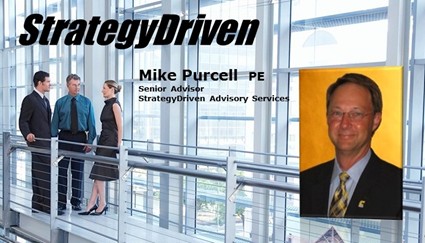Posts
4 Services You Need For Your Business To Succeed
/in Tactical Execution/by StrategyDriven
It’s nearly 2016 and that could mean a new start for your company. Perhaps this year wasn’t as profitable as you hoped so it’s time to make some changes. If you want your business to be successful, we suggest you invest in the right services. That way you can save on costs as well as making sure your business is run more effectively. These are the services and solutions that we suggest.
Legal Advice
It’s crucial for a modern business to hire the right legal help. There are a number of different ways your business can find itself with a legal issue. It could be related to your employees. This might be to do with human resources, bullying or even an accidental injury. You’ll be thankful that you have employment law consultants at hand, ready to help.
You could find that you have a contractual dispute with a supplier. When dealing with contracts for your business, it’s best to think ahead. You need to make sure that you always have legal help whenever you are making a new deal with business partners. That way you will be completely protected. Of course, legal solutions are just one of the ways you need to protect your company.
IT Support
We imagine that a large majority of your business is dependent on online networking. If that’s the case you need to make sure that it doesn’t break down or falter. It’s difficult to do this without hiring a full IT team for your business. That’s costly so instead you should outsource this job to an IT support service. They’ll keep a check on your computer systems and ensure everything operates smoothly. This is particular beneficial if your business is using cloud-based software.
Using cloud-based software, you might be running your company from outside of an office. In fact it could be a global machine with lots of different parts. But if the server breaks, then you will almost certainly run into issues operating your business.
A Business Consultant
Business consultants come in all different forms and with various charges. You could get a marketing consultant or a customer service consultant. Either way, they are sure to boost the effectiveness of your business, offering you key advice in their specialised area. That said, the cost is troublesome. That’s why we suggest you use a person business advisor instead. These are far more cost friendly and will provide your company with great support.
A Market Agency
Lastly, any successful business owner will tell you just how important marketing is. It’s not just about getting your business noticed. It’s about making sure that your company is remembered by customers and that you are constantly making waves. The best way to do this is to hire a digital marketing agency. They’ll run promotion for your business on all major platforms, ensuring customers find and use your company.
Use these solutions and we guarantee your business will be more effective, and you will maximise your profits in the new year.
Magnetic: The Art of Attracting Business
/in Marketing & Sales/by Joe CallowayCreating exceptional value for customers should be the core of your sales, marketing, and growth strategy.
Word of mouth is the most powerful factor in buying decisions today. Whether it’s consumer or business to business, buyers want to know what your existing and past customers think of you. Increasingly, this word of mouth is taking place on the internet, whether on review sites, in chat groups, or on social media.
What others say about you is infinitely more influential than anything you say about yourself. That’s why the value and experience that you create for customers should be the absolute focus of your sales, marketing, and growth strategy. That’s how you become a customer magnet and attract new business to you.
Here are 5 keys to becoming a customer magnet:
Hi there! This article is available for free. Login or register as a StrategyDriven Personal Business Advisor Self-Guided Client by:
Subscribing to the Self Guided Program - It's Free!
About the Author

.
Mike Purcell Joins StrategyDriven Power & Utilities Advisory Services Practice
/in Announcements/by Nathan IvesStrategyDriven is proud to welcome Mike Purcell as a StrategyDriven Advisory Services Senior Advisor. A highly experienced nuclear power consultant, Mike joins StrategyDriven’s Power & Utilities Advisory Services practice.
“We are thrilled to have Mike join our StrategyDriven Advisor Services Team,” said Nathan Ives, StrategyDriven Advisory Services Practice Leader. “Increasing demand for clean, affordable electricity combined with an aging infrastructure, retiring workers, growing regulations, rising capital costs, and intensifying budget pressures challenge utility executives and managers now more than ever. We are fortunate to have an industry professional of Mike’s caliber to help our Power & Utility clients meet these challenges. His hands-on knowledge and experience in performance improvement, regulatory inspection readiness, license renewals, and power uprates will be a great asset to our team”

Prior to becoming a management consultant, Mike held numerous influential positions at the Tennessee Valley Authority (TVA), leading nuclear oversight, engineering, and training functions as well as performance improvement initiatives including:
- Senior Manager, Nuclear Oversight – responsible for performance of the quality control and quality assurance functions and providing oversight of day-to-day plant activities important to nuclear station safety and security
- Senior Fleet Licensing Manager – led a diverse and geographically distributed team of licensing professionals responsible for all licensing activities associated with TVA’s fleet of six nuclear reactors
- Senior Manager, Training and Development – successfully integrated the training and development functions across TVA into a single high-performing organization providing pipeline and continuing technical training programs; supervisory, employee, and leadership development; regulatory / compliance training; and organizational effectiveness / culture change programs and initiatives
- Nuclear Plant Organizational Effectiveness Assessments – participated on teams of highly experienced utility professionals in the performance evaluation of four nuclear plants in the area of organizational effectiveness and safety culture
- Regulatory Assistance / Recovery Initiatives – Supported multiple Mock NRC Inspection Assessments using NRC Supplemental Inspection Manual Chapters 95001, 95002, and 95003
- Performance Improvement through Employee Engagement Initiatives – Led employee engagement/process & performance improvement initiatives at the Sequoyah and Watts Bar Nuclear plants in order to identify solutions to close the $30 million gap in operations and maintenance (O&M) costs and increase generation
Mike further shaped the Nuclear Industry’s performance through his involvement with industry groups including:
- INPO Organizational Effectiveness Industry Peer and New Nuclear Oversight Manager course mentor
- Electric Power Research Institute (EPRI) and EUCG Peer Advisor
Mike holds a Bachelor of Science degree in Mechanical Engineering from Tennessee Technical University and a Master of Business Administration from the University of Tennessee at Chattanooga. He is a licensed as a Professional Engineer by the State of Tennessee.
Click here to read Mike’s complete biography. Mike can be contacted at [email protected].
Conflict Resolution in the Workplace
/in Management & Leadership/by Laura MacLeodEmployee conflict is unavoidable in any office environment, this is a fact. Even the most functional of teams will sometimes disagree or experience infighting, which can be difficult to manage.
Example: Hotel Housekeeping Staff Managers are approaching employees on their lunch break to assign tasks, discuss changes and give directions. Workers object to this (“Lunch is my time, I’m off the clock”). Some workers are shouting at managers, threatening to call the union, or altogether ignoring them. Others are listening and taking direction. Managers are frustrated, angry and sometimes shouting back. There is conflict among workers (those who object versus those who don’t) and between workers and managers. You are the director of housekeeping and need to manage this conflict.
Steps to follow to sort out conflict:
Hi there! This article is available for free. Login or register as a StrategyDriven Personal Business Advisor Self-Guided Client by:
Subscribing to the Self Guided Program - It's Free!
About the Author

For more information on Laura Macleod and her techniques please visit FromtheInsideOutProject.com. To learn more, feel free to email Eliza Osborn at [email protected] or call +1 (877) 841-7244.

 Leaders motivate and inspire their followers to collaboratively pursue achievement of an established vision. Thus, the very nature of leadership necessitates employee interaction, direction setting, and performance standard establishment.
Leaders motivate and inspire their followers to collaboratively pursue achievement of an established vision. Thus, the very nature of leadership necessitates employee interaction, direction setting, and performance standard establishment.